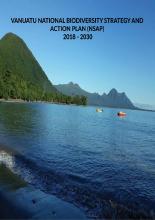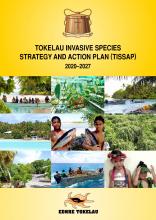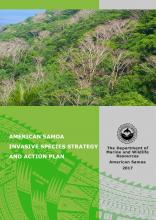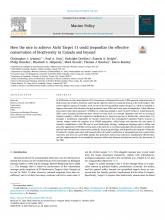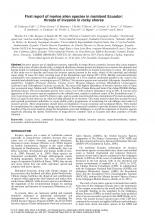First report of marine alien species in mainland Ecuador: threats of invasion in rocky shores


Island and Ocean Ecosystems, BRB
Available Online
Bigatti, G.
,
Cornejo, M.
,
Coronel, J.
,
Cárdenas, A.
,
Cárdenas-Calle, M.
,
Keith, I.
,
Martinez, P.
,
Mora, E.
,
Pérez-Correa, J.
,
Rivera, F.
,
Torres, G.
,
Triviño, M.
,
Troccoli, L.
,
Villamar, F.
,
Zambrano, R.
2019
Invasive species are of signi?cant concern, especially in mega-diverse countries, because they cause negative e?ects such as loss of native biodiversity, ecological alterations, disease spread, and impacts on economic development and human health. In mainland Ecuador, information on invasive invertebrates in marine ecosystems is scarce. The objective of this study was to describe and locate the invasive species present in the rocky shores of the intertidal and subtidal zones along 10 areas (83 sites) covering most of the Ecuadorian coast during 20152016. Benthic macroinvertebrates communities were measured over quadrats located randomly on a 50 m transect positioned parallel to the coast in the intertidal and subtidal zone, covering an area of 1,860 km2. Six invasive species were recorded: Arthropoda (Amphibalanus amphitrite), Cnidaria (Pennaria disticha, Carijoa riisei), Bryozoa (Bugula neritina), Rhodophyta (Asparagopsis taxiformis) and Chlorophyta (Caulerpa racemosa). The areas with highest abundance of invasive species were in Jama (not a protected area), Marine and Costal Wildlife Reserve Puntilla of Santa Elena and Santa Clara Island Wildlife Refuge (protected areas). The most abundant species was Carijoa riisei with a relative abundance of up to 80%. It was the most aggressive of the invasive species registered in the subtidal zone, mainly in northern centre of the Ecuadorian coast. C. riisei is growing on native coral (Pocillopora spp.) and on sessile macroinvertebrate communities (Pinctada mazatlanica, Muricea appresa and Aplysina sp.) that are being a?ected by its invasion. This study must be taken into account by local and regional government authorities to create public policy programmes of monitoring for surveillance and control of invasive species. These programmes should focus on integration of socio-economic and ecological e?ects. They should be complemented by experimental design and analysis of environmental variables to provide technical information for a baseline of bio-invasion analysis along the Ecuadorian coast and Galápagos, to avoid the expansion of invasive species negatively a?ecting the marine biodiversity of mega-diverse countries such as Ecuador and other countries of South America.
